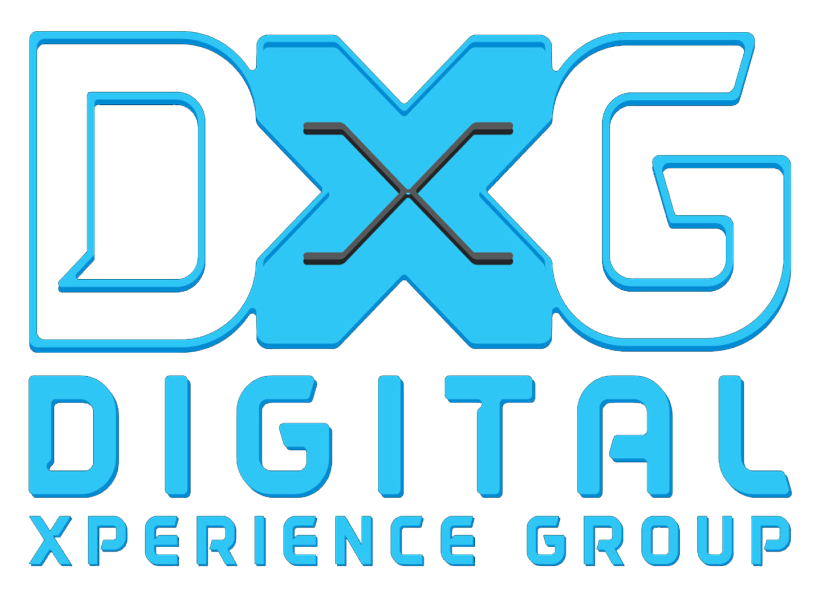

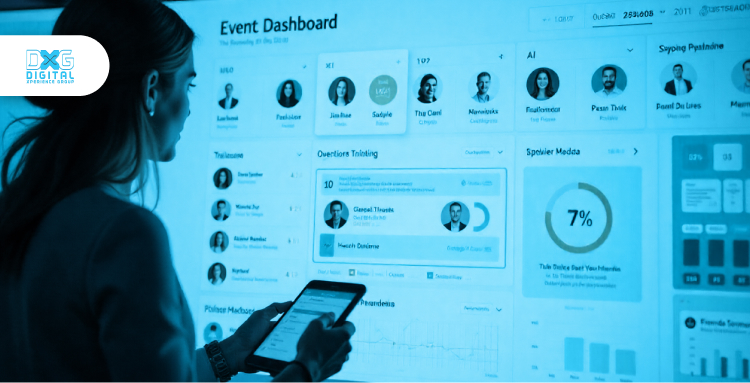
July 28, 2025
We used to plan events around schedules, slots, speakers, and breaks. Now we plan around feelings. Around energy. Around what someone might post before they even sit down.
Experience design isn’t about decoration anymore. It’s about intent. Every scent, every sound, every second is a chance to engage or to lose someone’s attention entirely.
And in 2025, that pressure’s only growing. Audiences are sharper. Expectations are higher. Authenticity is no longer optional. So, what’s next in the world of experience design? Let’s take a look at the trends quietly reshaping how we gather.
People do not want to attend events that appear generic. They seek out content that speaks directly to their interests, roles, and goals. Hyper-personalization can help with that.
In simple terms, it means designing event experiences that adapt to each attendee. Not in a creepy way, rather as a smart use of data. From personalized agendas to AI-recommended sessions and networking suggestions, we want to give people what they actually care about, not what we think they should care about.
“72% of attendees expect events to be tailored to their preferences.”
Source—(EventMB)
Most event platforms now use behavior tracking, real-time analytics, and artificial intelligence tools to personalize everything from session reminders to who you meet in the networking lounge. When done correctly, it improves the overall experience and makes it feel more relevant.
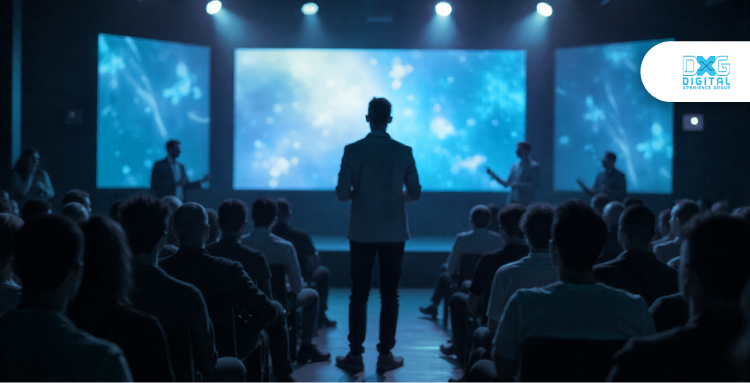
Hybrid events are no longer limited to livestreams with chat boxes. That is far behind us now. In 2025, the best hybrid events view both online and in-person audiences as equally important, and they plan for both from the start.
“61% of event organizers reported a higher ROI from hybrid formats.”
Source—(Bizzabo)
And that’s no surprise. The new wave of hybrids combines physical presence with digital interactivity. You’ll see things including immersive online venues, synchronized co-watching spaces, and shared Q&A or polls. And the goal is to make remote attendees feel like they’re actually participating, not just watching from the sidelines.
It's not about replicating the in-person experience; instead, it's about creating something that works well together. Additionally, the ROI is self-evident.
Let's be honest: everyone enjoys playing. When you introduce a small challenge or reward, everyone becomes more alert, curious, and engaged. That is why smart event design is leaning toward gamification, though with a scientific foundation.
“45% of attendees engage longer when events include gamified elements.”
Source—(Markletic)
Gamification takes advantage of how the brain perceives achievement and progression. It’s not only about flashy leaderboards anymore. It is about incorporating small, rewarding actions throughout the experience. Consider virtual treasure hunts that lead attendees through content, booth visits that result in immediate rewards, or a point system that allows people to earn access to exclusive sessions or giveaways.
These mechanics are effective because they stimulate motivation in subtle yet powerful ways. They encourage participants to learn more about the event, interact with sponsors, and remember key takeaways. Even better: when gamified elements are linked to event goals (such as networking, product demos, or session attendance), everyone benefits. It becomes both strategic and entertaining.
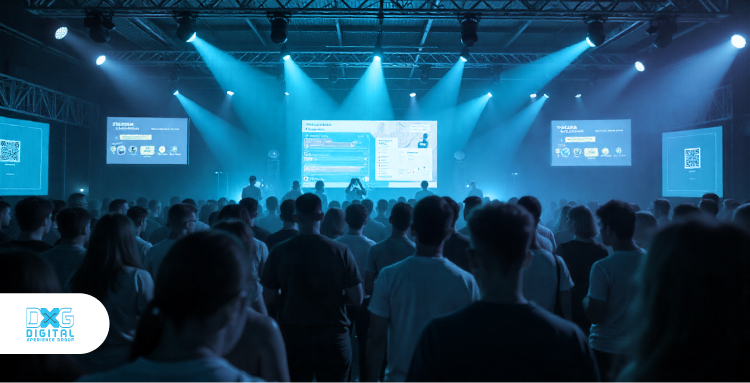
Nowadays, sustainability is incorporated into the decision-making process rather than being merely a catchphrase. Attendees are concerned about how events affect the environment and are holding brands accountable. As a result, more organizers are making environmentally conscious decisions early in the planning process.
“83% of attendees prefer brands that commit to sustainable event practices.”
Source—(Event Industry Council)
And that statistic says it all. It is not just about getting rid of plastic water bottles. We're talking about selecting green-certified venues, using carbon-offset travel options, providing digital-only brochures, and even reducing food waste through smarter catering.
When events demonstrate a genuine commitment to sustainability, trust grows. Attendees associate that effort with brand integrity, and the positive perception lasts long after the event. By 2025, considering sustainability when designing is expected rather than optional.
Good event design appeals to all of the senses, not just the eyes. Immersion environments are useful in this situation. When attendees can see, hear, touch, and even smell the experience, they develop a stronger emotional connection.
“Multisensory experiences increase brand recall by 70%.”
Source—(Harvard Business Review)
This trend is expected to manifest itself in a number of significant ways by 2025. Augmented and virtual reality are enabling brands to tell richer stories by immersing attendees in fully interactive worlds. Scent marketing is used to create mood and memory triggers, such as a fresh citrus scent at a wellness event or a warm vanilla scent for a cozy retail brand.
Touchable installations and hands-on demo zones encourage exploration and interaction. Meanwhile, curated soundscapes guide people's energy throughout the day, whether they're accelerating in the morning, slowing down for keynotes, or creating immersive ambient backdrops in lounges.
This type of design is particularly useful for product launches, brand activations, and exhibitions. Why? Because people not only just want to hear about a product, but also they want to feel it and experience it. And when the senses are fully engaged, the brand story becomes something they won’t forget.
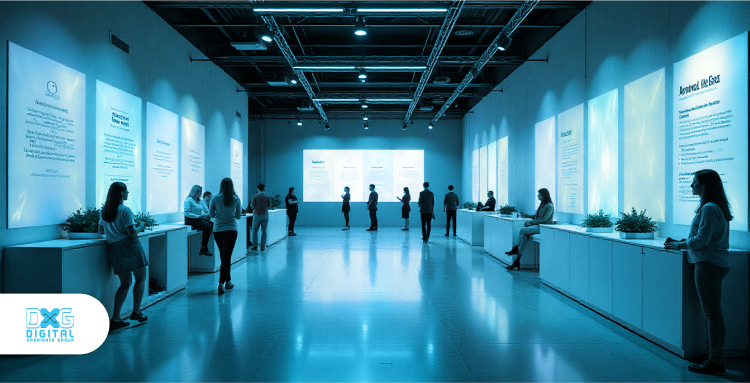
The best events are not simply planned; rather, they evolve. Using technology such as smart badges, session heatmaps, and live polls, organizers can see what's working and what's not while the event is still taking place.
“79% of enterprise organizations now consider real-time data processing essential.”
Source—(Number Analytics)
That kind of insight allows you to pivot quickly. If a session draws a larger crowd than anticipated, you can provide overflow seating. If a sponsor booth isn't getting traffic, you can reposition it or send attendees a gentle reminder via the app. Even minor adjustments, such as changing the timing of food service or highlighting a popular session, can help to smooth the day's flow.
This is especially important for multi-day events, where what you learn on Day 1 can be applied directly to Day 2. And it's not just about better logistics. Real-time feedback improves attendee experience, resulting in increased engagement, higher satisfaction scores, and more valuable post-event insights.
People are tired of one-way conversations. Today's attendees want to participate rather than be lectured. That is why community-based programming is becoming a popular strategy. It transfers some control from the organizers to the audience, and this shift pays off.
“59% of attendees say they trust content created by peers more than brand-driven keynotes.”
Source—(LinkedIn Events)
When attendees can help shape the agenda, the content feels more relevant and personal. We’re seeing more events open the floor for peer panels, crowd-sourced topics, fireside chats, and even breakout sessions run by attendees themselves. It’s not just about inclusion—it’s about tapping into the collective experience of the audience.
This approach is particularly effective for professional and industry events, where the value is frequently derived from shared knowledge rather than headline speakers. In 2025, making room for those voices is more than just a nice gesture; it's a smart move that fosters trust and increases engagement.
The future of event experience design is about making genuine connections rather than ticking boxes. As we've seen with these trends, today's attendees expect more than just a schedule of sessions. They want customization, participation, sustainability, and something they will remember.
That is why forward-thinking event designers are moving away from a format-first mindset and toward an experience-first approach. The emphasis has shifted to creating meaningful moments, whether through immersive environments, real-time feedback, or gamified interactions.
DXG does more than just design events; we also design for impact. Our versatile services combine strategy, creativity, and technology to create experiences that connect people, ideas, and brands in powerful ways. We can help you create a smarter and better product launch, hybrid summit, or community-driven forum.
Let’s rethink how events are done. Benchmark your current strategy. Test new ideas. Build feedback loops. Most importantly, do more than just host an event. Create an experience. If you want to discuss your plan, call us at 855 282 9394 or fill out the quick form.